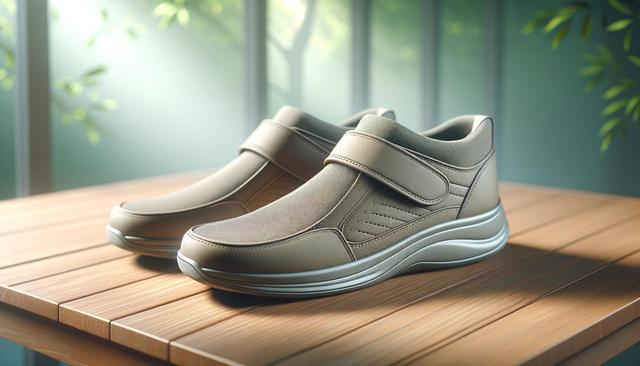Understanding the Importance of Footwear in Diabetic Care
For individuals managing diabetes, foot health is an essential component of overall well-being. Nerve damage and poor circulation are common complications that can lead to serious foot issues if not addressed appropriately. One of the most effective preventive measures is wearing appropriate footwear. The benefits of orthopedic shoes for diabetic foot care are numerous, offering both protection and comfort to reduce the risk of complications such as ulcers, infections, and even amputations. Unlike standard shoes, orthopedic footwear is designed with the unique needs of diabetic feet in mind.
Diabetic-friendly shoes help maintain proper foot alignment, distribute pressure evenly, and minimize friction. These elements are crucial in preventing skin breakdown and injuries that can go unnoticed due to neuropathy. By integrating features like seamless interiors, extra depth, and specialized cushioning, these shoes support daily mobility while enhancing foot safety.
How Diabetic Shoes Help Prevent Ulcers and Injuries
Foot ulcers are one of the most common and serious complications for those with diabetes. These open sores often occur due to a combination of pressure points, poor circulation, and diminished sensation. Understanding how diabetic shoes help prevent ulcers is key to appreciating their value. Proper footwear can help by:
- Providing extra room to reduce pressure on vulnerable areas
- Minimizing seams and internal stitching that could cause irritation
- Incorporating moisture-wicking materials to reduce bacterial growth
- Offering superior cushioning to absorb impact during walking
By reducing pressure and friction, diabetic shoes create an environment that discourages the formation of sores and blisters. This is particularly important for those who may not feel injuries due to peripheral neuropathy. Wearing the right shoes is not just a matter of comfort—it’s a critical preventive strategy in diabetic foot care.
Key Features to Look for in Diabetic Footwear
Choosing suitable footwear involves knowing the features to look for in diabetic footwear. Not all shoes marketed for diabetics offer the necessary support or protection. When selecting diabetic shoes, key elements to consider include:
- Seamless interiors to prevent rubbing and irritation
- Extra-depth design to accommodate foot deformities or orthotics
- Wide toe boxes for ample space and reduced pressure
- Supportive insoles that conform to the foot’s shape
- Firm heel counters for added stability
- Breathable, flexible materials to reduce moisture buildup
Footwear should also be properly fitted by a professional, ideally under the guidance of a healthcare provider or podiatrist. Ensuring the right fit can drastically reduce the risk of pressure points and enhance overall foot health.
Exploring Custom Orthopedic and Medical-Grade Solutions
While off-the-shelf diabetic shoes can be effective for many, those with more complex foot needs may benefit from custom orthopedic footwear options. These shoes are tailored to the individual’s foot shape, gait, and specific medical concerns. In cases where foot deformities, previous ulcers, or amputations are present, standard models may not offer adequate protection or comfort. Custom solutions provide a higher degree of precision in fit and functionality.
Additionally, medical-grade diabetic shoe solutions are often prescribed by healthcare professionals and may qualify for coverage under certain insurance or healthcare plans. These options typically include enhanced materials and design features that go beyond regular orthopedic shoes. For individuals needing specialized care, these solutions can offer peace of mind and an extra layer of protection against complications.
Working with a certified pedorthist or podiatrist is often the first step in creating a custom footwear plan. These professionals assess foot structure, pressure points, and risk areas to develop shoes that provide both support and safety.
Professional Guidance and Podiatrist Recommendations
Getting professional advice is a crucial part of finding the right diabetic footwear. Podiatrist-recommended support shoes are often designed with a greater understanding of the unique challenges faced by diabetic patients. Podiatrists can perform comprehensive foot exams, identify potential problem areas, and recommend shoes that cater specifically to individual needs.
Here are some benefits of seeking podiatrist guidance when choosing footwear:
- Accurate assessment of foot health and risk factors
- Custom orthotic prescriptions to complement footwear
- Education on proper foot hygiene and shoe maintenance
- Monitoring of ongoing foot conditions or changes
By partnering with a podiatrist, individuals can ensure they are making informed choices that support long-term foot health. Regular check-ins can also help catch issues early, before they become serious problems.




Leave a Reply